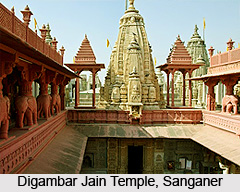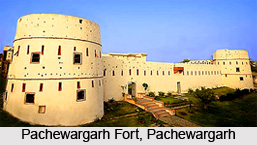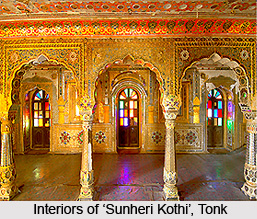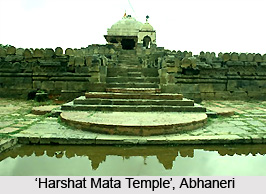 Places of interest around Jaipur, Rajasthan are the various beautiful tourist destinations of this part of the nation which are renowned for their historical and cultural heritage. These places are quite easily accessible by road. Excursion tours are also available for tourists from Jaipur. Jaipur enjoys a convenient location in the state of Rajasthan. Ancient forts, temples, gardens and palaces adorn the historical city of Jaipur which has preserved the specimens of its glorious past so beautifully.
Places of interest around Jaipur, Rajasthan are the various beautiful tourist destinations of this part of the nation which are renowned for their historical and cultural heritage. These places are quite easily accessible by road. Excursion tours are also available for tourists from Jaipur. Jaipur enjoys a convenient location in the state of Rajasthan. Ancient forts, temples, gardens and palaces adorn the historical city of Jaipur which has preserved the specimens of its glorious past so beautifully.
Sanganer
The town is well known for hand printed textiles. These products are exported to all over the world. Besides being artistically famed Sanganer has a beautiful Digambar Jain Temple and the idol of Rishabh Dev present here is believed to be over 4000 years of age. As is the case with the Jain temples this shrine too is intricately carved. It is 16 kilometers away from Jaipur. Intricate carvings embellish the interiors of this shrine, along with very high `sikharas`. Such carvings resemble those found in Dilwara Temples of Mount Abu. Its construction was completed during the 10th century.
Bagru
Located at a distance of 30 kilometres from Jaipur, it is famous for block prints. The only dyes used are the predominantly traditional vegetable dyes. Such items are quite popular with the tourists. The Chhipa community has been engaged in this trade for more than 100 years. Tourists often make a beeline for this city as it is famous for its attractive Rajasthani `jootis` or `Mochdi`, boots, leather shoes and numerous leather products. Pickles, indigo-dyes and wooden hand-block printed materials are readily available here.
Jamwah Ramgarh
Based about 30 kilometres northeast of Jaipur, Ramgarh is a wonderful picnic spot. It is mostly known for its man-made lake. In the rainy season when this 15 square kilometres artificial lake gets filled and it attracts large flocks of waterfowl. Nilgai, Chital and Lion are a few of the exotic wildlife dwelling here. Jamwa Sanctuary, an old fort and the Temple of Jamwa Mata are the local attractions here. This temple had been erected by Rao Dulherao belonging to the clan of Kachhwahas and it is present close to Ramgarh Lake. The region was named so in the honour of this deity.
 Pachewargarh
Pachewargarh
Pachewargarh is 90 kilometres away from Jaipur. Khangarot Rajput, a sub-clan of Kachhawa rulers, once ruled it. There is an impressive 300 years old fort, which has currently been converted into a heritage hotel.
Tonk
Famous as `Lucknow of Rajasthan`, it has a number of mosques, `havelis` and mansions. It is located at a distance of 100 kilometres from Jaipur. While touring this town tourists can check out the `Sunheri Kothi` or the Golden Mansion. It is an intricately carved palace with semi precious stones and Mother-of-Pearl. Other local attractions are Arabic and Persian Research Institute and Toda Rai Singh. It is also famous for its woollen rugs.
Sambhar
Sambhar is a small town that is located at a distance of 60 kilometres from Jaipur. Sambhar is renowned for the largest saline water lake in India which is known as Sambhar Salt Lake. Hence it is also referred to as the Salt Lake City. The picturesque beauty of the place attracts tourists in large numbers. Sambhar is also known for Yuvraj Yadav, Lakshmi Narayan Ji Temple, Shakambari Mata Temple, Devyani Ji Sarovar, the holy Devayani Tank, Dadu Dayalji, Sukh Sagar Ashram and the Naliasar.
Bairat
It houses the pillars and inscription on the rocks that proof that it is primarily a Buddhist establishment. It dates back to the 3rd century BC to 1st century AD. It lies 86 Km north of Jaipur along the Jaipur-Shahpura-Alwar road. A large cave on the Pandu Hill is a major local attraction. Bhim Ki Doongri is considered to be Bhim`s abode, during the Pandava`s exile. Besides these the annual Banganga Fair at Bairat is popular with travellers too.
Madhogarh
Madhogarh is located at a distance of 40 kilometres from Jaipur. For handicrafts it is one of the best places. Pottery and carpets are available in abundance here. Besides the handwork there is a fort here bequeathed to Thakur Pratap Singhji by the Maharaja Sawai Ram Singh II of Jaipur known as Madhogarh Fort
 . This old fort was created by Madho Singh over 400 years ago and the ruler Madho Singh belonged to a Rajput family of Kachhwaha clan.
. This old fort was created by Madho Singh over 400 years ago and the ruler Madho Singh belonged to a Rajput family of Kachhwaha clan.
Bhandarej
Bhandarej is a historical town that is located on the banks of Bhadrawati River. This town came to prominence when the Kachhwaha chieftain Dhula Rao conquered it from Badgujar in the 11th century. Dhula Rao`s descendant has converted the magnificent sandstone Bhadrawati Palace into a heritage hotel.
Kalakho
The pictorial town of Kalakho is set amidst golden mustard fields against the back drop of Aravallis. The adjacent woodlands and lakes has become an abode for bird lovers and those in search of serenity.
Abhaneri
Existent at a distance of 95 kilometres away from Jaipur, Abhaneri houses Harshat Mata Temple. The history of the village is steeped in legends. In fact it is believed that its name has been derived from the Goddess. While she was in a bright mood she had spread `abha` or luster. Hence the name Abhaneri was derived. Numerable visitors are attracted to the ancient `Chand Baori` stepwell present in the village which was constructed during the period between 800 and 900 AD by King Chanda of Nikumbha Dynasty.
Samode
Samode town is situated within the protective hills enroute to the famous Shekhawati region. It is located at a distance of 40 kilometres from the city of Jaipur. The town is famous for its own cloth printers, bangle makers and other artisans nestled within its old walls. Samode Palace is located here which possesses a hall that is embellished with exquisite mirror work and paintings. Due to renovations by Rawal Sheo Singh, in the mid 19th century the palace showcases a blend of Rajput-Mughal architectural styles. The Samode Fort, in ruins, towers above the palace and it is the apt place to get a bird`s eye view of the neighbouring area.
Amer
Amer town which is present about 11 kilometres away from Jaipur is famous for the beautiful Amer Fort, composed of marble and red sandstone. The different sections of the Amer Fort include `Diwan-e-Aam` or `Hall of Public Audience`, `Diwan-e-Khas` or `Hall of Private Audience`, `Jai Mandir` or `Sheesh Mahal`
 (mirror palace) and finally `Sukh Niwas` wherein a pleasant climate used to be artificially introduced by placing a water cascade in the premises which cooled the winds passing over it.
(mirror palace) and finally `Sukh Niwas` wherein a pleasant climate used to be artificially introduced by placing a water cascade in the premises which cooled the winds passing over it.
Other Places of Interest around Jaipur
Innumerable other well-known tourist locales are scattered throughout the region of Jaipur which are frequented by travellers from all across the country. Hawa Mahal, Jaigarh Fort close to Amber, Rambagh Palace, Nahargarh Fort near Aravalli Mountains, Albert Hall Museum, City Palace, Panchayati Hall Temple, Govind Dev Ji Temple, Garh Ganesh Temple, Kanak Vrindavan, Sisodia Rani Bagh and many other tourist destinations lure several historians and tourists to this place.



















